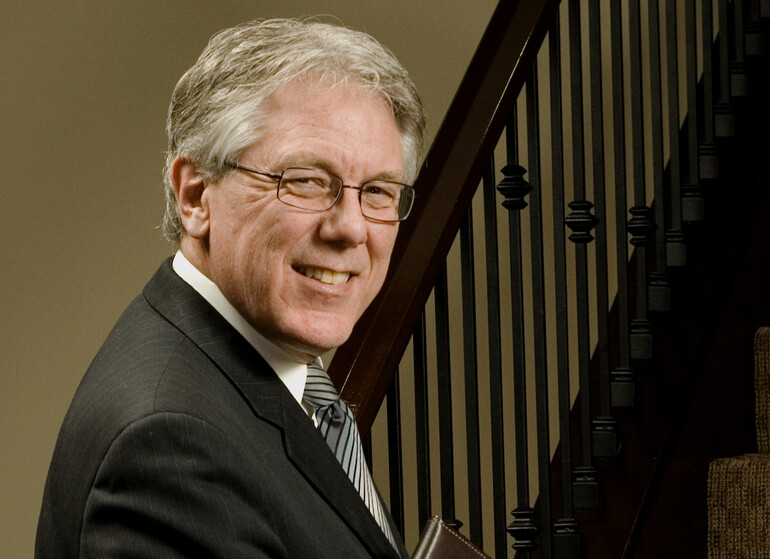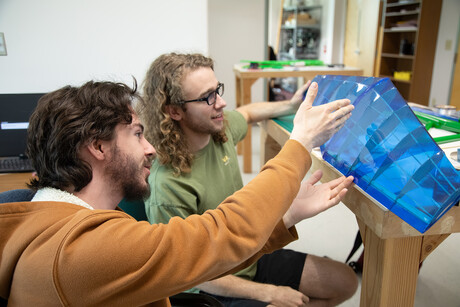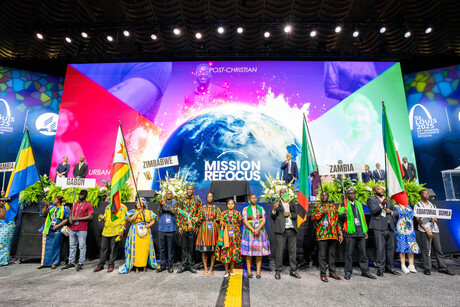When the Apostle Paul described God’s church as a body with differing parts, but of equal value, I believe he was onto something we too often forget. Diversity doesn’t have to pull us apart. Instead, it can add color and new insights to both our corporate and individual perspectives.
Our North Pacific Union Conference office has experienced this firsthand. We’ve decided that one of our roles is to be an integral part of the communities we are in. One recent gathering brought state legislators from southwest Washington to our office for a community town hall meeting.
Why do we do this? We believe God has called us to be salt and light in this world. When state, county or local community groups come into our building, they are touched with our Seventh-day Adventist mission in multiple ways.
They can’t help but notice our mission statement etched in the glass by the main entrance door. In the main hallway they often pause and examine the Nathan Greene painting of the Second Coming. In the upper landing, they gaze at the recently donated stained-glass window that also shows in brilliant colors Jesus' soon return.
And as they mingle with us in the workplace, I hope they receive the personal touch of our core values of courtesy and helpful attitudes, in spite of any differences.
A closer look at Greene's painting reveals the people waiting to rise to meet Jesus in the air hail from all ethnicities, all ages, all walks of life. The closer you look, the more you understand. This is God’s plan for His people, for His church.
Diversity is more than the “red and yellow, black and white” phrase many of us sang as youngsters. It is certainly more than racial and ethnic minorities, age, gender, and other demographic categories. Diversity is about people with differing viewpoints, perspectives, backgrounds, specializations and competencies, all of which deserve consideration.
Are we thinking about these things as we select members to serve on the various committees that hold in their hands the work of the church now and in the future? Or are we focused only on “who we know”?
Have we considered generational perspectives? How many heads within our committees are free of gray hair?
Diversity includes generational balance. Younger professionals see the world in a dramatically different light than their older counterparts do. In particular, millennials’ understanding of technology, new media and the pace of social change is important in bringing forth new ideas.
Yes, greater diversity can also bring more vigorous dialogue, more friction. But I think this is alright. We can use a little tension or dissent to avoid group-think. Debate is healthy, and having multiple perspectives allows collective wisdom and experience to foster better ideas, solutions and ownership by all members.
I believe diversity and inclusion foster healthy dialogue, encourage the sharing of multiple perspectives and enhance decision making. Diversity makes us smarter.
Achieving greater diversity should be a continual goal, but there is no finish line and no ideal ratio or mix. What it requires is a Christian respect for the faith and values we hold in common and the differences that make every person unique.
It’s not a new idea. Paul had it right when he observed in 1 Corinthians 12, “If the whole body were an eye, where would be the hearing? If the whole were hearing, where would be the smelling? But now God has set the members, each one of them, in the body just as He pleased. And if they were all one member, where would the body be?”
Paul's caveat, of course, is that this diversity must still work harmoniously toward the good of the whole body. Our diversity must find a common center in a common mission.
So welcome the new ideas from that young person in your midst. A closed room gets pretty stale, and this body could benefit from some fresh air.











